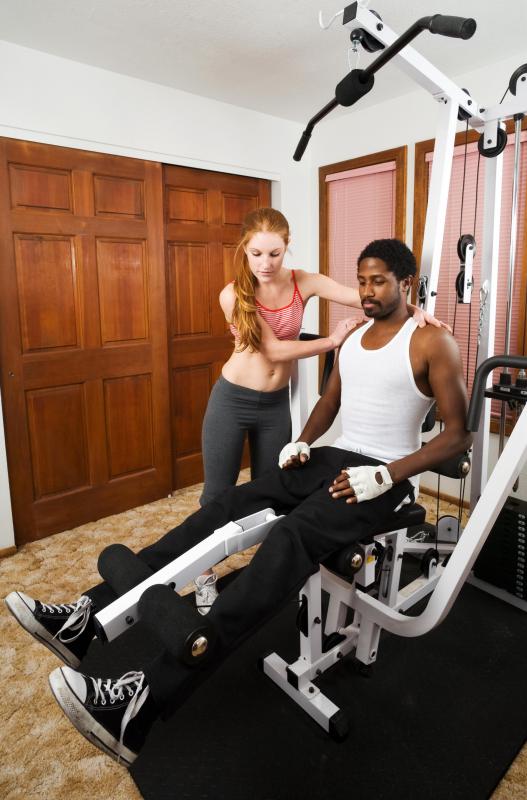At TheHealthBoard, we're committed to delivering accurate, trustworthy information. Our expert-authored content is rigorously fact-checked and sourced from credible authorities. Discover how we uphold the highest standards in providing you with reliable knowledge.
What are the Differences Between Antagonist and Agonist Muscles?
The difference between antagonist and agonist muscles is that they work in the opposite direction to complete an action. Agonist muscles react in response to voluntary or involuntary stimulus and create the movement necessary to complete a task. Antagonist muscles act against the agonist muscle and help to move the body part back in place after the action is completed.
Six hundred muscles make up the human body’s musculoskeletal system. Tendons attach muscles to bones, allow muscles to move bones, and give joints their flexibility. Antagonist and agonist muscles work in pairs to accomplish a full range of movements and actions. Muscles, however, are not specifically antagonist or agonist.

Depending on the movement required, a muscle can be an agonist in one motion and an antagonist during another action. The agonist always contracts to initiate movement and the antagonist stretches and lengthens to allow the movement. To return the body part to a normal position, the agonist muscle that initiated the original movement will need to become the antagonist to allow the original antagonist muscle to contract and return to normal positioning.

Common pairs of antagonist and agonist muscles exist. In the upper body, the biceps and triceps work to complete actions related to movement of the arm. The quadriceps and hamstrings in the upper leg work to help move the knee joint and perform exercises, such as squats and leg extensions. Other examples include the pectorals and latissimus dorsi in the chest and back area, and the trapezius and deltoid muscles of the upper back and shoulders.
Agonists are often referred to as the prime mover. They initiate the contraction necessary to move a limb through the joint's range of motion. Examples of agonists in action are the biceps during a bicep curl and the quadriceps during a leg lift.

Antagonists are typically reactionary. This means that they lengthen or stretch to allow the agonist to complete an action. In the case of the bicep muscle contracting to do a bicep curl, the triceps would be considered the antagonist muscle. The hamstring becomes the antagonist when the quadriceps contracts to do a leg lift.
Other types of muscles help antagonist and agonist muscles perform necessary movements. Synergist muscles often assist the agonist in making the initial movement within the joint. Another type of muscle, a fixator, helps stabilize surrounding structures during movement of both types of muscles.
AS FEATURED ON:
AS FEATURED ON:














Discussion Comments
@Charred - Balance is important in bodybuilding, but imbalance sometimes results from other activities.
For example, in sports you sometimes have what’s called an overuse injury – where one muscle gets used a lot, in a particular motion.
You can find this in tennis for example. I know this because my son developed tennis elbow as a result of playing tennis and the repetitive motion involved with the swings of the racket.
We eventually had to get him this tennis grip rotation device that manipulated his tendons. It moved the muscles back and forth; in effect, it used both agonist and antagonist muscles as part of the exercise, to restore muscle use back to his arm.
It worked well; he now scarcely feels any pain while playing tennis.
In body building, the agonist - antagonist principle also goes by the name of “push” and “pull.”
The bicep curl that the article talks about would be your pull. If you were to exercise your triceps, on the other hand, by positioning dumbbells over your head near the back and then lifting them, then that would be considered a push exercise.
Push and pull applies to all parts of the body when you exercise – this is one of the first things that I had to learn when I was weightlifting.
I started doing mostly pushes and not enough pulls, but this threw my muscles out of balance. You have to remember that your muscles are meant to work together, so make sure you do push and pull if you want balance and true strength in your body building regimen.
Post your comments